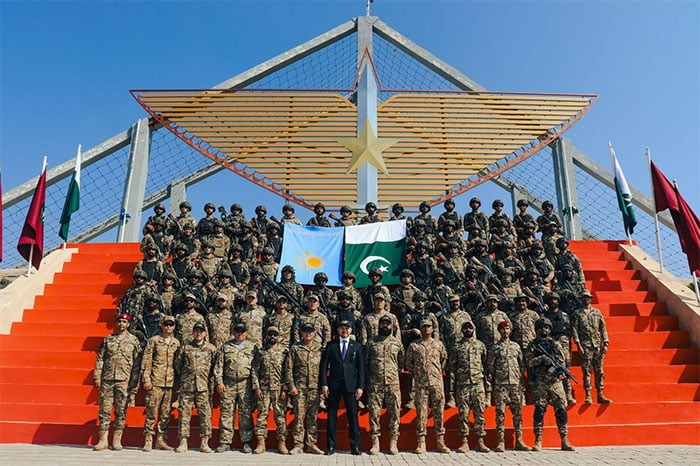Amid Cherat’s rugged hills, Pakistan and Kazakhstan sealed Dostarym–5 with a salute of friendship, unity, and shared resolve against evolving threats.

News Desk
CHERAT, KAZAKHSTAN: In the rugged hills of Cherat, beneath a haze of dust and autumn sun, the rhythmic cadence of drills came to an end as special forces from Pakistan and Kazakhstan concluded their two-week joint military exercise, Dostarym–5—translated aptly as “Friendship–5.” The closing moments carried both the solemnity of completion and the quiet pride of achievement, marking another chapter in the growing defence cooperation between the two nations.
The exercise, which began on October 14, brought together Pakistan’s elite Special Services Group (SSG) and Kazakhstan’s special forces in an intensive round of counter-terrorism and tactical warfare training. Over the fortnight, the soldiers engaged in simulated urban operations, hostage rescue drills, and endurance-based field maneuvers designed to test precision, coordination, and adaptability under extreme conditions.
Supervised by senior officers, the training aimed to build on lessons learned from previous joint operations while introducing new methods for combating evolving militant threats. The closing ceremony, held at the Special Operations School in Cherat, was attended by senior military officials from both countries. The presence of the Ambassador of Kazakhstan to Pakistan and the Kazakh defence attaché lent the occasion a distinctly diplomatic tone, reinforcing the exercise’s broader purpose beyond military coordination—to cement strategic trust.
An official statement from the Inter-Services Public Relations (ISPR) described the joint exercise as a “symbol of professional excellence and partnership,” noting that the participants had demonstrated exceptional skill, discipline, and mutual respect throughout the training. Both sides were said to have benefited from the shared experience, particularly in areas of counter-insurgency, intelligence-led operations, and rapid deployment under hostile conditions.
The days spent training side by side were also an exercise in cultural exchange. Officers from both countries lived, ate, and worked together, building camaraderie that military planners hope will translate into long-term operational synergy. In a region where security dynamics remain fluid and transnational threats continue to evolve, such cooperation signalled a recognition that the fight against terrorism demands collaboration across borders.
As the final salute echoed across the Cherat valley, the exercise concluded not just with military precision, but with an unmistakable gesture of friendship—one forged through shared discipline, mutual respect, and a collective resolve to safeguard peace.

